The True Meaning of Discipline in Educational Contexts
To fully grasp the meaning of discipline in education, we must first understand its etymology. The word “discipline” derives from the Latin word “disciplina,” meaning “instruction” or “teaching.” It shares the same root as “disciple”—a student or learner. This origin reveals that discipline was never intended to be punitive but rather instructional and developmental.
When we apply this understanding to our classrooms, we shift from seeing discipline as a way to control student behavior to viewing it as an opportunity to teach valuable life skills. Effective teacher skills include the ability to reframe disciplinary moments as teaching opportunities rather than punishment sessions. This perspective aligns with research showing that students respond better to guidance than to punitive measures.
In educational settings, the meaning of discipline encompasses:
- Teaching students self-regulation skills
- Guiding them toward making better choices
- Helping them understand the impact of their actions
- Developing their ability to function effectively in social settings
- Building intrinsic motivation rather than relying on external control
As educators, our understanding of the meaning of discipline directly influences our approach to classroom management. When we embrace discipline as a teaching tool rather than a control mechanism, we create opportunities for genuine growth and development.
Distinguishing Between Discipline and Punishment: The Meaning of Discipline Clarified
One of the most important teacher skills is the ability to distinguish between discipline and punishment. Though often used interchangeably, these concepts represent fundamentally different approaches to addressing student behavior.
Discipline (Teaching Approach)
- Focuses on teaching appropriate behavior
- Is proactive and preventative
- Builds skills for the future
- Maintains the student’s dignity
- Strengthens the teacher-student relationship
- Encourages reflection and growth
Punishment (Control Approach)
- Focuses on penalizing inappropriate behavior
- Is reactive and after-the-fact
- Addresses only the immediate situation
- May diminish the student’s sense of worth
- Can damage the teacher-student relationship
- Often generates resentment rather than learning
Effective discipline strategies focus on teaching students the skills they need to make better choices in the future, not just stopping unwanted behavior in the moment. According to a study by the American Psychological Association, punitive approaches may temporarily suppress behavior but often fail to teach the skills needed for long-term behavioral change.
When we understand the true meaning of discipline as guidance rather than punishment, we can develop teacher skills that help students learn from their mistakes rather than simply suffer for them. This approach not only improves behavior but also builds stronger, more trusting relationships between teachers and students.
Enhance Your Discipline Approach
Discover research-based strategies for effective classroom discipline that focus on teaching rather than punishing. Our comprehensive course provides practical tools you can implement immediately.
Fostering Self-Discipline: The Ultimate Goal in Understanding the Meaning of Discipline
The highest form of discipline isn’t externally imposed but internally motivated. As educators, our ultimate goal should be to help students develop self-discipline—the ability to regulate their own behavior, make responsible choices, and pursue goals even when facing challenges or distractions.
Developing teacher skills that foster self-discipline in students is a gradual process that requires patience and consistency. Research shows that self-disciplined students perform better academically, have stronger social relationships, and are better prepared for future success.
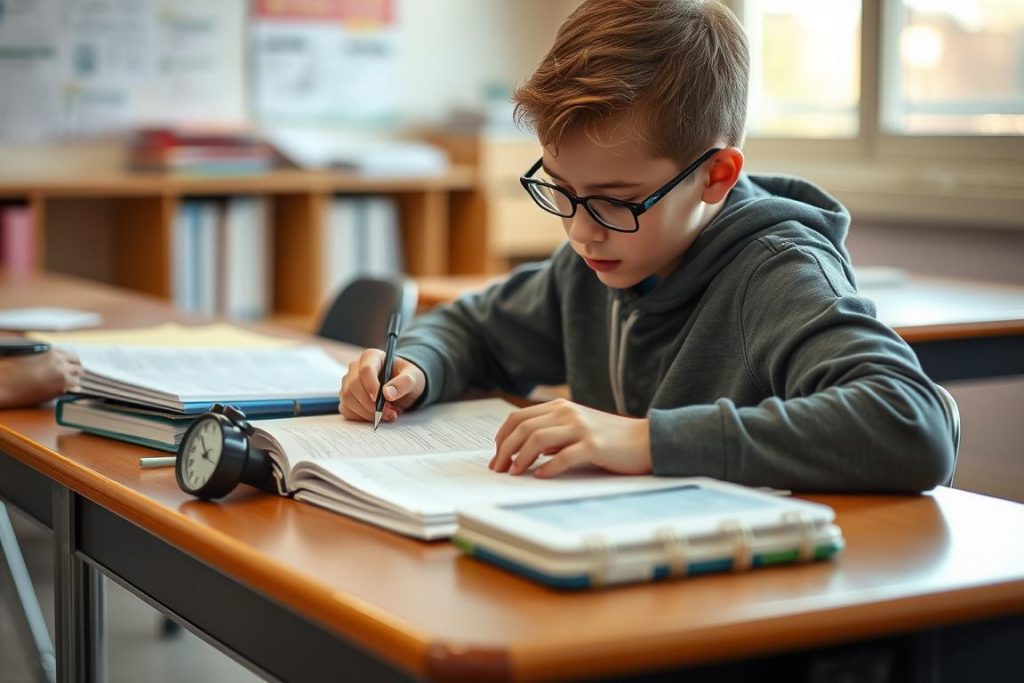
Strategies to Develop Self-Discipline in Students
Model Self-Regulation
One of the most important teacher skills is modeling the behavior we want to see. When students observe us managing our emotions, staying organized, and persisting through challenges, they learn valuable lessons about self-discipline.
Teach Executive Function Skills
Executive function skills—including planning, organization, and impulse control—are the building blocks of self-discipline. Explicitly teaching these skills helps students develop the capacity for self-regulation.
Provide Structured Choice
Offering appropriate choices within clear boundaries helps students practice decision-making and experience the consequences of their choices in a supportive environment.
The meaning of discipline in this context shifts from external control to internal capacity-building. By focusing on developing students’ ability to regulate themselves, we prepare them not just for success in our classrooms but for life beyond school.
“The best discipline is the kind that doesn’t come from a teacher at all but from within the student. Our job is to create the conditions where this internal discipline can flourish.”
– Dr. Thomas Lickona, developmental psychologist
Fostering self-discipline requires specific teacher skills, including the ability to provide clear expectations, offer meaningful feedback, and gradually release responsibility to students as they demonstrate readiness. These approaches align with the true meaning of discipline as guidance rather than control.
Positive Discipline Approaches: Applying the Meaning of Discipline Constructively
Positive discipline represents an approach that aligns perfectly with the true meaning of discipline as teaching rather than punishing. This methodology focuses on mutual respect, understanding the purpose behind behavior, and finding solutions that benefit everyone involved.
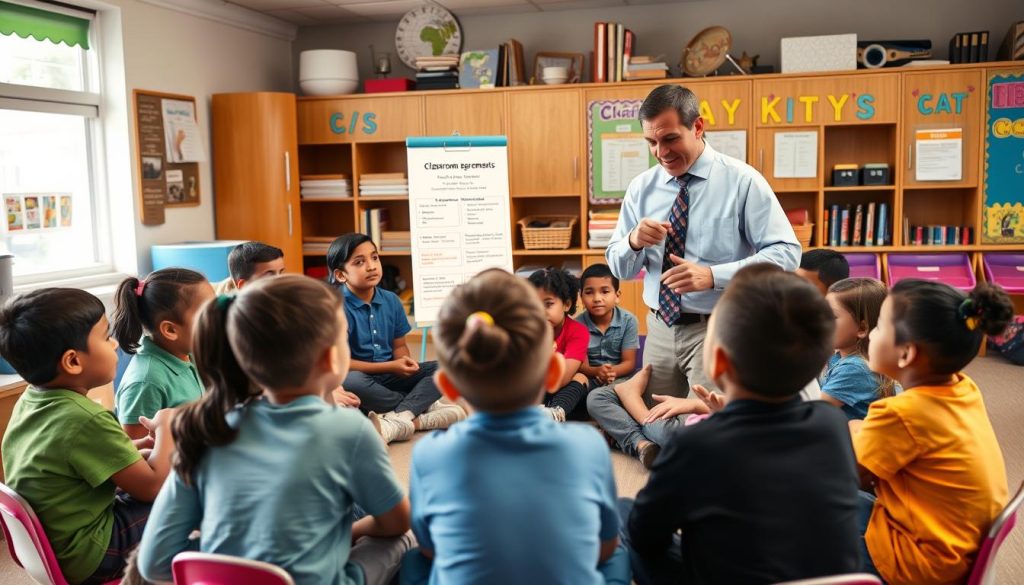
Implementing positive discipline requires specific teacher skills, including:
- The ability to identify the underlying needs driving student behavior
- Skills in facilitating problem-solving discussions
- Techniques for teaching social-emotional skills directly
- Approaches for reinforcing positive behavior
- Methods for setting clear, reasonable boundaries
Research consistently shows that positive discipline approaches lead to better outcomes than punitive methods. According to a study published in the Journal of Educational Psychology, classrooms that implement positive discipline techniques show improvements in academic performance, decreased behavioral problems, and enhanced student-teacher relationships.
Key Components of Positive Discipline
Connection Before Correction
Building strong relationships with students creates a foundation of trust that makes them more receptive to guidance. This approach recognizes that the meaning of discipline includes maintaining human dignity.
Teaching Skills Explicitly
Many behavioral issues stem from skill deficits rather than willful disobedience. Identifying and teaching missing skills is a core teacher skill within positive discipline frameworks.
Natural and Logical Consequences
Rather than arbitrary punishments, positive discipline relies on consequences that are directly related to the behavior and help students learn from their choices.
By embracing these positive discipline approaches, teachers can create classroom environments where students feel safe, respected, and motivated to contribute positively. This aligns with the true meaning of discipline as a process of teaching and guiding rather than controlling and punishing.
Transform Your Classroom Management
Looking for practical ways to implement positive discipline in your classroom? Our comprehensive resources provide step-by-step guidance for K12 teachers.
Cultural Considerations in Understanding the Meaning of Discipline
The meaning of discipline is not universal—it varies significantly across cultural contexts. As educators in increasingly diverse classrooms, developing teacher skills that acknowledge and respect these differences is essential for creating inclusive learning environments.
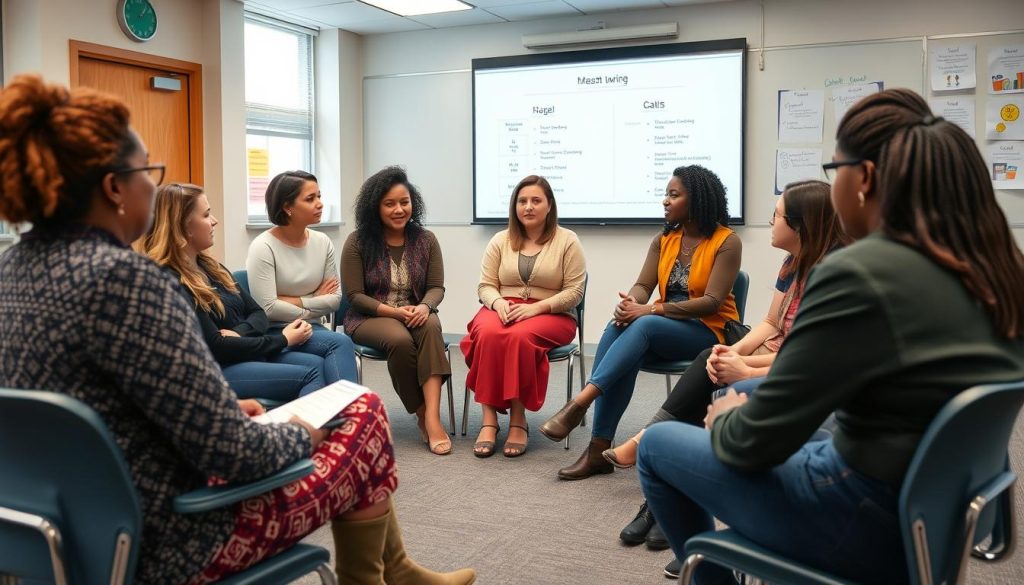
Cultural differences in discipline approaches may include:
- Varying expectations about student behavior and communication styles
- Different perspectives on the role of authority figures
- Diverse views on appropriate consequences for misbehavior
- Cultural variations in how respect is demonstrated
- Different emphases on individual versus collective responsibility
Developing cultural competence is an essential teacher skill for effectively implementing discipline approaches that respect all students. This includes being aware of our own cultural biases, learning about the cultural backgrounds of our students, and adapting our approaches accordingly.
“Effective discipline acknowledges that children come to school with different cultural understandings of appropriate behavior, authority, and learning. When we recognize these differences as resources rather than deficits, we can create more inclusive and effective approaches to classroom management.”
– Dr. Gloria Ladson-Billings, researcher on culturally relevant pedagogy
The meaning of discipline in a culturally responsive classroom includes creating space for multiple perspectives and approaches while maintaining a safe, respectful learning environment for all students. This requires teacher skills in communication, flexibility, and ongoing learning about diverse cultural practices.
Strategies for Culturally Responsive Discipline
Build Relationships and Knowledge
Take time to learn about your students’ cultural backgrounds and how discipline is approached in their homes and communities. Use this knowledge to inform your approach and build stronger connections.
Examine Your Own Cultural Lens
Reflect on how your own cultural background shapes your expectations and responses to student behavior. Being aware of these influences helps you make more conscious, equitable decisions.
By expanding our understanding of the meaning of discipline to include cultural considerations, we create more inclusive and effective learning environments for all students.
Practical Implementation: Bringing the Meaning of Discipline to Life in Your Classroom
Understanding the meaning of discipline as teaching rather than punishing is the first step. The next challenge is translating this understanding into daily classroom practices. This requires specific teacher skills that can be developed through intentional practice and reflection.
Essential Teacher Skills for Effective Discipline
Proactive Planning
Preventing behavioral issues through thoughtful classroom design, clear routines, and engaging instruction is more effective than reacting to problems after they occur. This proactive approach reflects the true meaning of discipline as guidance.
Responsive Intervention
When issues do arise, responding with appropriate, proportional interventions that teach rather than punish requires specific teacher skills in de-escalation and problem-solving.
Reflective Practice
Continuously evaluating and adjusting your approach based on what works for your specific students is essential for effective discipline implementation.
Implementing effective discipline approaches requires a toolbox of strategies that align with the true meaning of discipline. Here are some practical techniques that have proven effective in diverse classroom settings:
Practical Discipline Strategies
- Clear Expectations: Collaboratively develop and clearly communicate behavioral expectations
- Consistent Routines: Establish predictable routines that provide structure and security
- Relationship Building: Invest time in getting to know your students individually
- Restorative Practices: Use conflicts as opportunities to restore relationships and teach skills
- Logical Consequences: Implement consequences that are directly related to the behavior
- Positive Reinforcement: Acknowledge and reinforce positive behaviors
- Student Involvement: Include students in problem-solving and decision-making
These strategies require specific teacher skills, including effective communication, emotional regulation, and the ability to maintain consistency while remaining flexible enough to meet individual student needs.
Elevate Your Classroom Management
Ready to implement these strategies in your classroom? Our comprehensive course provides step-by-step guidance for creating a positive discipline environment.
Professional Development: Enhancing Teacher Skills for Effective Discipline
Developing a deep understanding of the meaning of discipline and the skills to implement it effectively is an ongoing journey. Professional development opportunities can provide valuable support for teachers seeking to enhance their discipline approaches.
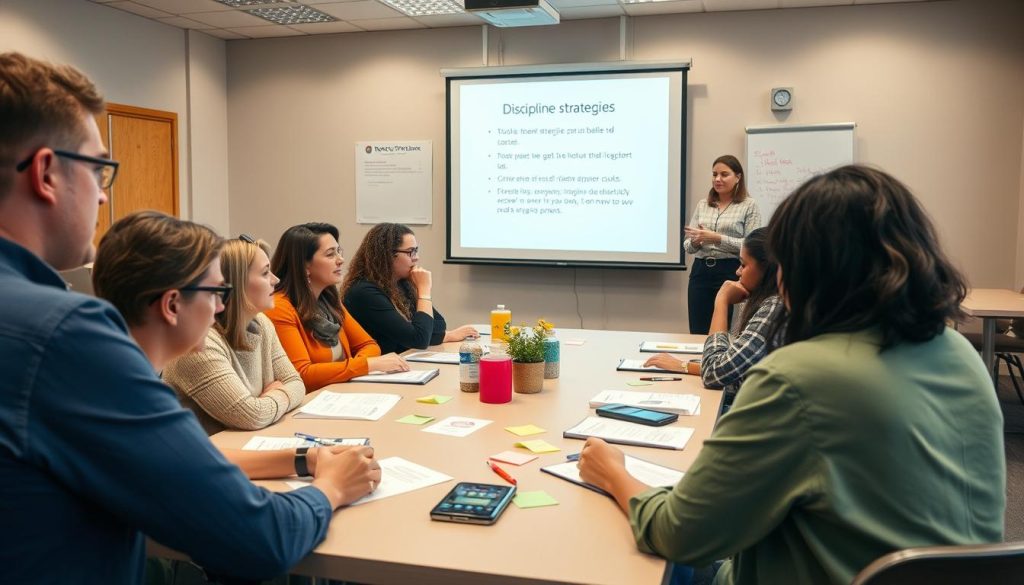
Effective professional development for discipline should focus on building specific teacher skills, including:
- Understanding the developmental needs of students at different ages
- Recognizing the underlying causes of challenging behaviors
- Implementing evidence-based discipline strategies
- Adapting approaches to meet diverse student needs
- Building strong, supportive relationships with students
- Creating classroom environments that prevent behavioral issues
Professional learning communities (PLCs) provide valuable opportunities for teachers to collaborate, share strategies, and reflect on their discipline practices. This collaborative approach recognizes that developing teacher skills related to discipline is enhanced through peer support and shared expertise.
“The most effective professional development for discipline doesn’t just provide strategies—it transforms how teachers understand student behavior and their own role in guiding it.”
– Dr. Ross Greene, author of “Lost at School”
By investing in professional development focused on the meaning of discipline and effective implementation strategies, schools demonstrate their commitment to creating positive learning environments where all students can thrive.
Advance Your Professional Growth
Earn continuing education credits while enhancing your classroom management skills with our specialized courses for K12 teachers.
Conclusion: Embracing the True Meaning of Discipline
Throughout this exploration of the meaning of discipline in education, we’ve discovered that effective discipline is fundamentally about teaching and guiding rather than controlling and punishing. This understanding transforms how we approach classroom management and student development.
By developing essential teacher skills—including proactive planning, responsive intervention, cultural competence, and reflective practice—we can create learning environments where discipline serves its true purpose: helping students develop the self-regulation, responsibility, and social skills they need for success in school and beyond.
Remember that implementing effective discipline approaches is an ongoing journey that requires patience, consistency, and a commitment to continuous learning. As you refine your teacher skills in this area, you’ll not only see improvements in student behavior but also in academic engagement, classroom climate, and your own professional satisfaction.
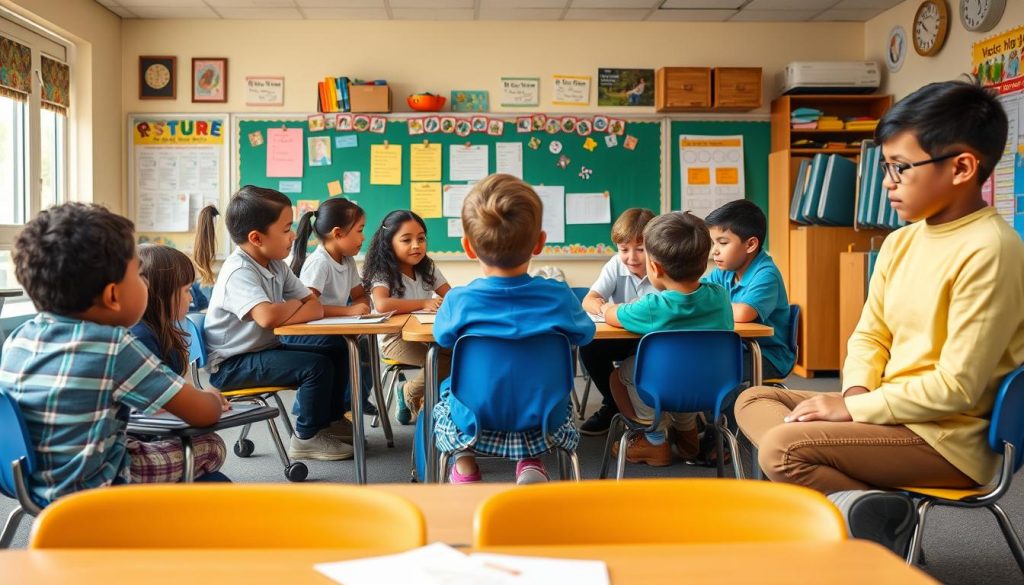
By embracing the true meaning of discipline as teaching rather than punishing, you’ll create a classroom environment where students feel safe, respected, and empowered to grow—both academically and socially.
Continue Your Professional Journey
Ready to transform your approach to classroom discipline? Explore our comprehensive resources designed specifically for K12 teachers.




